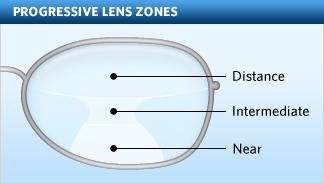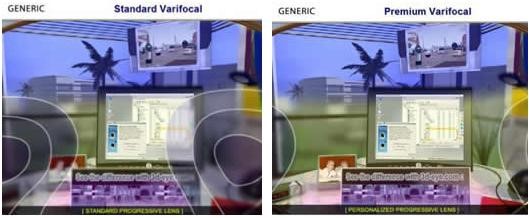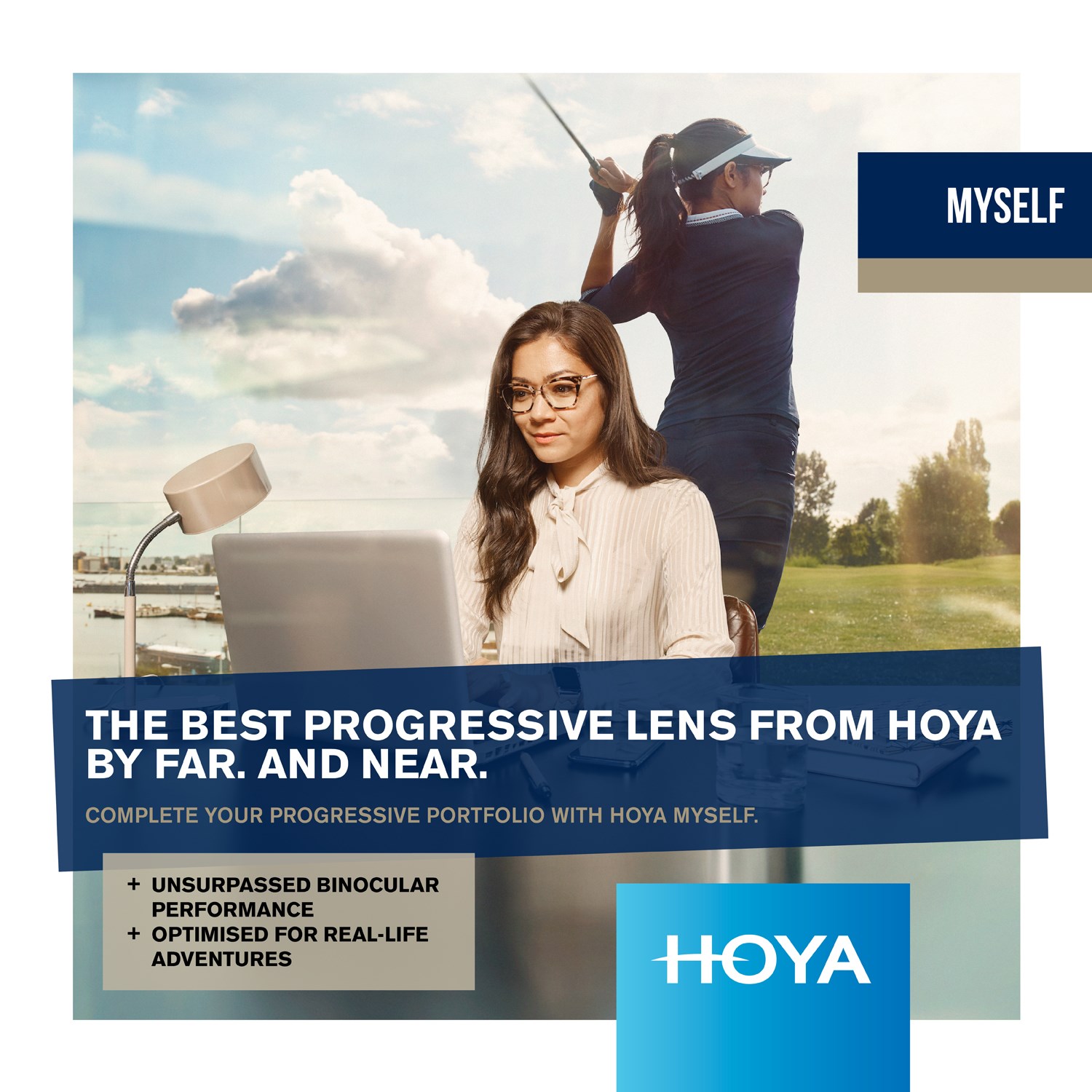Category: Lenses
Varifocals, what are they?
I have been a varifocal wearer for a couple of years now, and as an optical professional I knew what to expect and how best to adapt to them.
They have worked wonders for me in all areas but if you are unsure about what they are, how they work or if they are for you, here is a little insight (see what I did there).
Most of us have heard of or know someone who has Varifocals, but what are they and how do they work?
As we get older our eyes change and lose some of their ability to alter focus efficiently from distance to near objects, at a certain stage this becomes very apparent, you may feel you hold small print further away or struggle to see near things at all. This is called Presbyopia, and it will affect all of us at some point after the age of 40.
If you are at that point, like me, you know it can be frustrating having to swap and change your glasses all the time if you need different prescriptions for distance and reading vision. You may be the perfect candidate for a multipurpose set of lenses.
All forms of eyewear have some level of compromise compared to having perfect vision but varifocals have the least comprise of all and act most like natural vision.
Varifocals can do what ordinary single vision lenses can't, which is to give you, the wearer, multiple focal points in just one lens. This means no more changing your glasses for each task… You’ll have all areas of vision, in one pair of lenses.
How Do Varifocals Work?
Varifocals are also known as Multifocal or Progressive powered lenses (PPL’s). They have a gradual change in strength from the top of the lens to the bottom with multiple focal points in between.
Unlike the older types of multipurpose lenses such as Bifocals which only have two distinct points or Trifocals which had three, they incorporate every possible power of lens between your distance and near needs, this allows you to see all distances and focus points through just one lens.
They are typically used when you have two prescriptions, one for distance and one for reading, but there are always steps in-between these two prescriptions and this is where they excel over the other options. E.g. juggling multiple pairs throughout the day.
They are typically used when you have two prescriptions, one for distance and one for reading, but there are always steps in-between these two prescriptions and this is where they excel over the other options. E.g. juggling multiple pairs throughout the day.
We use digital devices much more than ever and many different versions such as phones, tablets, laptops and desktop computers are used in different positions. This means a single vision lens option very rarely works for each aspect of your daily visual needs.
Below are the basic 3 regions of a varifocal lens:
- Distance Zone: The ‘upper’ portion of the varifocal lens provides the ‘distance’ viewing area.
- Intermediate Zone: The distance and reading areas are connected via a ‘corridor’ of intermediate powers and viewing for ‘mid-range’ vision.
- Near/Reading Zone: The ‘bottom/lower’ portion of the lens provides the ‘close up/reading’ area.

Types of Varifocal Lenses:
There are many different types of varifocals on the market offering numerous benefits and features dependent upon your lifestyle, needs and requirements.
Standard varifocal lens:
Are the ‘entry-level’ varifocal options and are chosen as an enhanced alternative to bifocals. They still have clear vision and fairly wide focal areas for distance, reading and ‘in-between’, but the areas are narrower than other designs and there will be more noticeable ‘peripheral distortion’ around the edge of the lens but most people will still adapt to them well. If you have a small difference in prescription between distance and reading these lenses work well.
Advanced varifocal lenses:
Offer much clearer vision at all points and are a significant step up from a standard varifocal lens in terms of vision, clarity, focus and ease of adapting to them.
Sometimes referred to as ‘free-form varifocals’ or ‘back-surfaced digital varifocal lenses’, these lenses are created using the latest computer-driven equipment and have a wider field of vision at the distance, intermediate/in-between and reading focal points.
All Varifocals are unique to your prescription and the lens shape of the frame you have chosen and therefore offer the fullest and widest vision possible with a smooth transition between the focal ranges. Advanced lenses have minimal peripheral distortion and are easier to adapt to than the standard version.
This image below shows the difference in the viewing field and distortion between a standard and a premium varifocal lens. The premium varifocal lens clearly has a wider field of vision and less peripheral distortion.

Occupational varifocal lens:
These are a specific type of varifocal and often work alongside traditional varifocals as a second pair where they can outperform for different tasks.
Occupational varifocal lenses are specific to different lifestyles, hobbies or occupation vision needs. If you frequently perform tasks at a particular distance for long periods of time then you'd appreciate the broader, more comfortable zone of vision that these varifocals give. They are made/named for specific vision distances such as 'close', 'screen' or 'room' depending on your vision requirements. They are particularly useful for screen work, especially where more than one screen is used.
They have less variation in prescription than a traditional varifocal and can be classed as enhanced reading lenses, these are unsuitable for driving.
The main differences compared to traditional varifocal lenses are:
- Larger intermediate (desktop computer screen) viewing areas
- Larger reading viewing areas
- Wider field of vision, due to fewer changes in prescription
- Less peripheral distortion
Typically referred to as workstyle, occupational, lifestyle or enhanced reading lenses.
Why do we ask you about lifestyle and work?
You may feel we are particularly nosy when it comes to us helping you choose your new glasses and lenses, we are, but there is also a valid reason for all the questions we may ask you.
When choosing the perfect eyewear for you we need to ensure that they will be fit for purpose and that your visual needs will be catered for, this means we need to know what’s important to you.
Since we have been encouraged to work from home more there has been a greater demand on our eyes and we use more devices and for longer periods, as a result you may want us to make things more comfortable and practical for you.
Knowing your occupation, the type of digital devices and positions you use them at and how many, if you drive, if you play any sports all helps us to design the perfect combination.
You may have noticed we are also taking measures to position everything correctly for you. We align your lenses to sit perfectly in front of your line of vision, this also means we assess your posture so we can position everything perfectly for you. We want you lenses to perform as well and as naturally as possible.
Difficulties with Varifocals
We won’t lie, Varifocals sometimes get negative reviews and this can make you wary of trying them, don’t let it, we are all individual and have different needs, posture and visual demands. As with everything, you only ever hear a negative and very rarely hear the positives.
Success rate is very high for varifocals (over 99%) compared to the other options and is backed up by warranties in case you do struggle more than you had hoped.
Some people may have struggled to adapt to Varifocals in the past, this doesn’t mean you will. So if you are fed up of having to take glasses of and on, or when you look up in your reading glasses everything is blurry, let us show you how Varifocals can improve things for you.
